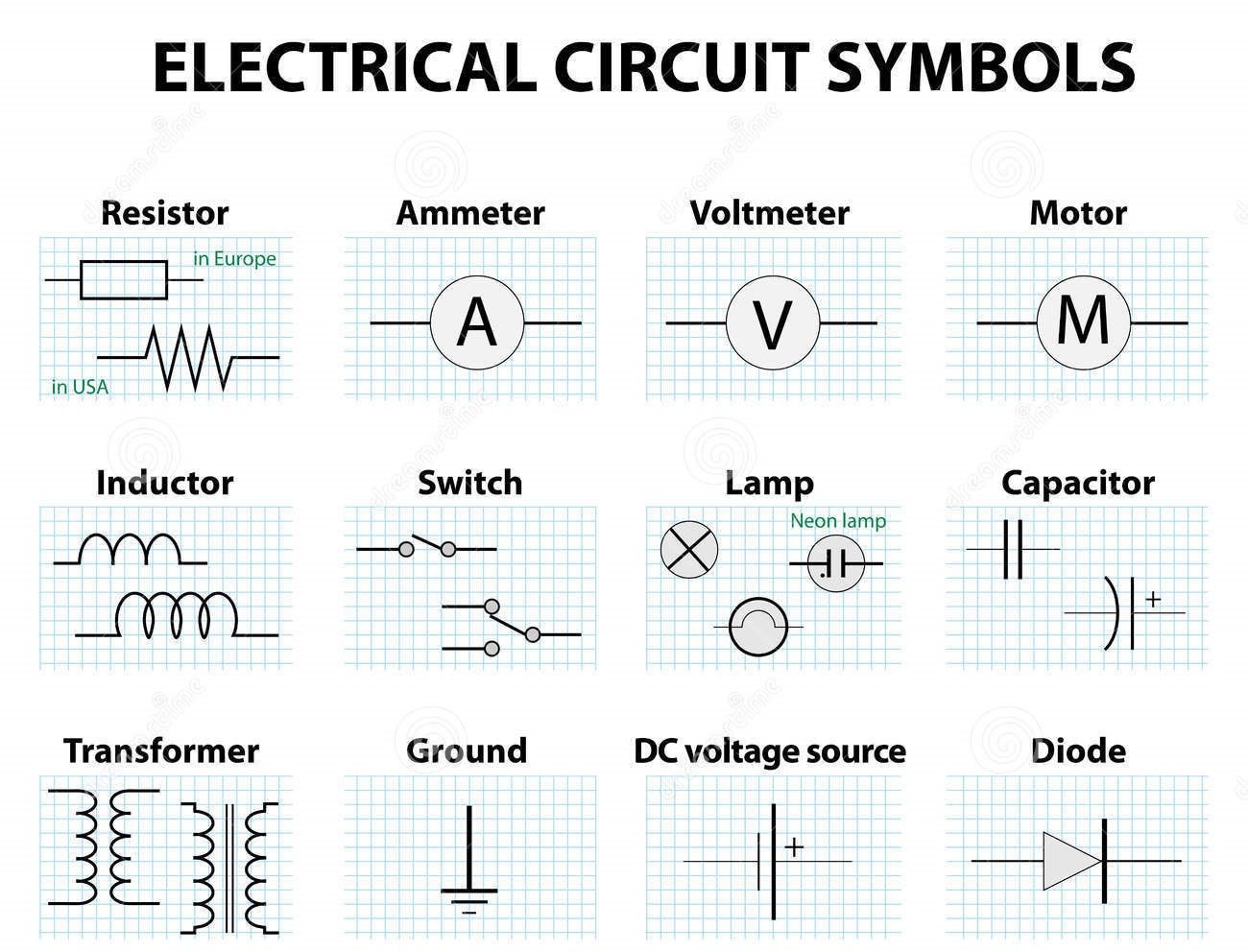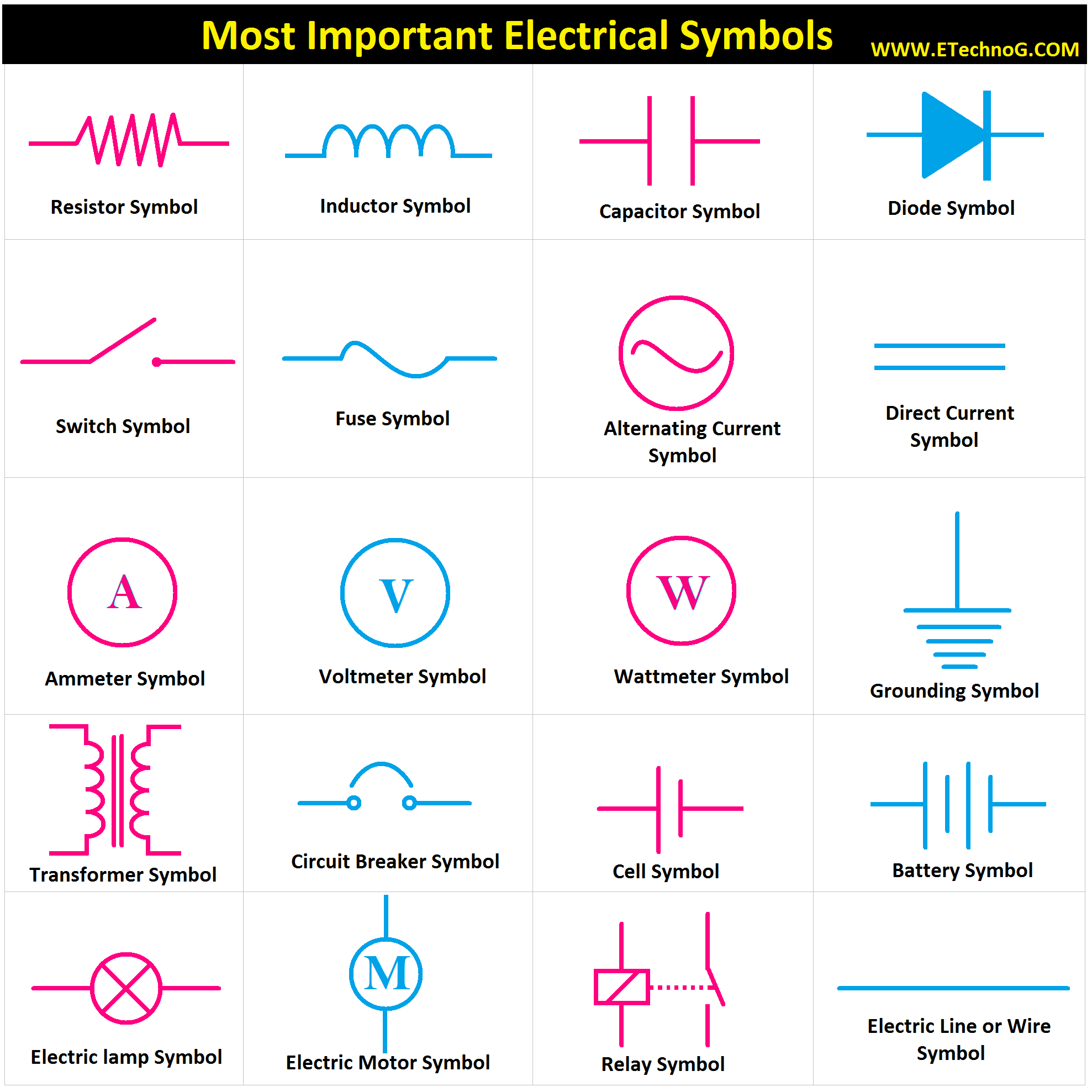Decoding the Elegance of Electronic Components and Their Symbols

Imagine the intricate workings of a watch, each tiny gear and spring contributing to its precise function. Similarly, the world of electronics relies on a fundamental set of components, each with its own unique role and symbolic representation. Understanding these basic electronic components and their symbols is akin to learning the alphabet of circuitry – a crucial step in deciphering the complex language of modern technology.
Electronic components are the building blocks of every electronic device, from the simplest LED flashlight to the most complex computer. These components, like carefully chosen accessories in a well-curated outfit, come together to create functional circuits that control the flow of electricity. Each component's symbol, a concise visual representation, acts as a shorthand notation, allowing engineers to communicate circuit designs efficiently.
The journey of electronic components began with humble beginnings – the invention of the vacuum tube, a bulky and power-hungry predecessor to the transistor. Over time, innovation led to the development of smaller, more efficient components like resistors, capacitors, and integrated circuits. This evolution, like the changing trends in fashion, has continuously shaped the landscape of electronics, enabling smaller, more powerful, and more energy-efficient devices.
The significance of understanding electronic component symbols cannot be overstated. These symbols, like the distinct patterns in a finely tailored suit, provide a universal language for engineers worldwide. They are the key to interpreting circuit diagrams, troubleshooting electronic systems, and designing new electronic marvels.
One of the key challenges in working with electronic components is selecting the right component for a specific application. Just as choosing the right fabric is crucial for a garment's drape and feel, choosing the right resistor value or capacitor type is essential for a circuit's proper operation. Mismatched or faulty components can lead to malfunctions, performance issues, or even complete circuit failure.
Resistors, symbolized by a zigzag line, restrict the flow of current. Capacitors, represented by two parallel lines, store electrical energy. Diodes, depicted as an arrow pointing towards a line, allow current to flow in only one direction. Transistors, symbolized by a combination of lines and an arrow, act as electronic switches or amplifiers. These are just a few examples of the core components and their symbolic representations that form the foundation of electronic circuits.
The benefits of mastering electronic components and their symbols are multifaceted. Firstly, it empowers individuals to repair and modify existing electronic devices. Secondly, it opens doors to designing and building custom circuits for specific applications. Thirdly, it provides a deeper understanding of the technology that pervades our modern world.
As a practical example, consider building a simple LED circuit. This involves connecting an LED, a resistor, and a battery in a specific configuration. Understanding the symbols for each component allows one to follow a circuit diagram and assemble the circuit correctly.
Advantages and Disadvantages of Miniaturization
| Advantages | Disadvantages |
|---|---|
| Smaller devices | Increased heat density |
| Lower power consumption | Manufacturing complexity |
Best Practice: Always double-check component values before soldering.
Real Example: Resistors are used in voltage dividers.
Challenge: Component overheating. Solution: Use heat sinks.
FAQ: What is a resistor? A resistor restricts current flow.
Tip: Use a multimeter to test component values.
In conclusion, the world of basic electronic components and their symbols is a fascinating and essential domain of knowledge. From the humble resistor to the complex integrated circuit, each component plays a crucial role in shaping the electronic devices that permeate our lives. Understanding their functions and symbolic language empowers us to interact with technology on a deeper level, enabling us to repair, modify, and even create new electronic marvels. Just as a skilled tailor understands the nuances of fabrics and stitching, mastering electronic components and their symbols opens up a world of possibilities, allowing us to craft intricate electronic designs with precision and elegance. Embrace the challenge of learning this fundamental language of electronics, and unlock the potential to innovate and create in the ever-evolving technological landscape.
Conquer any terrain your guide to the ford ranger tremor package
Mastering the fifa 22 companion app experience
Bmw service in columbia south carolina your ultimate guide

.jpg)











